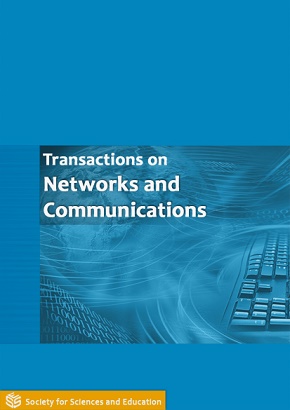Manufacture of Glass Foam by Predominantly Direct Microwave Heating of Recycled Glass Waste
DOI:
https://doi.org/10.14738/tnc.74.7214Keywords:
Glass foam; Glass waste; Calcium carbonate; Microwave heating; Silicon carbide.Abstract
The paper presents authors’ contribution to the improvement of the manufacturing technique of foam glass using the microwave energy. Due to the physical and mechanical characteristics, this material, obtained by the sintering process of waste glass at high temperature, constitutes a viable replacer of existing similar materials, used especially in construction. Unlike the conventional heating methods used worldwide, the company Daily Sourcing & Research SRL Bucharest tested lately microwave heating techniques in the manufacturing process of foam glass. In the paper it is presented an original method based on the feature of the powder mixture composed by waste glass (over 97 wt.%) and the foaming agent (calcium carbonate) to absorb the microwave energy and convert it to heat since the ambient temperature, using a silicon carbide and silicon nitride (80/ 20 weight ratio) crucible with thin wall (2.5 mm), which allows both a preponderantly direct heating and partially an indirect heating of the material. The main parameters of the process (specific consumption of energy, heating speed, process temperature and duration) were significant improved compared to the previous experiments.
References
(1) Kharissova, O., Kharissov, B. I., and Ruiz Valdez, J. J., Review: The use of microwave irradiation in the processing of glasses and their composites. Industrial & Engineering Chemistry Research, 2010, 49(4): p. 1457-1466.
(2) Hurley, J., Glass-Research and development, final report. A UK market survey for foam glass, March 2003.
(3) Scarinci, G., Brusatin, G., and Bernardo, E., Glass Foams in Cellular ceramics: structure, manufacturing, properties and applications, G. Scheffler, P. Colombo, Editors, Wiley-VCH Verlag GmbH & Co KGaA, Weinheim, Germany, 2005, p. 158-176.
(4) Knox, M., and Copley, G., Use of microwave radiation for the processing of glass. Glass Technology, 1997, 38(3): p. 91-96.
(5) Menezes, R. R., Souto, P. M., and Kiminami, R. H. G. A., Microwave fast sintering of ceramic materials. https://www.intechopen.com
(6) Rahaman, M. N., Sintering of ceramics, CRC Press, Taylor & Francis Group, Boca Raton, London, New York, 2007. https://books.google.ro
(7) Kolberg, U., and Roemer, M., Reacting of glass. Ceramic Transaction, 2001, 111: p. 517-523.
(8) Jones, D. A., et al., Microwave heating applications in environmental engineering-a review. Resources,
Conservation and Recycling, 2002, 34: p. 75-90.
(9) Paunescu, L., et al., Foam glass produced by microwave heating technique. Bulletin of Romanian Chemical Engineering Society, 2017, 4(1): p. 98-108.
(10) Paunescu, L., et al., Testing the use of microwave energy to produce foam glass. European Journal of Engineering and Technology, 2017, 5(4): p. 8-17.
(11) Dragoescu, M. F., et al., Influence of the color of bottle glass waste on the characteristics of foam glass produced in microwave field. International Journal of Science and Engineering Investigations, 2018, 7(72): p. 95-100.
(12) Dragoescu, M. F., et al., Foam glass with low apparent density and thermal conductivity produced by microwave heating. Europea Journal of Engineering and Technology, 2018, 6(2): p. 1-9.
(13) Dragoescu, M. F., et al., The use of microwave fields in the foaming process of flat glass waste. International Journal of Engineering Sciences & Management Research, 2018, 5(4): p. 49-54.
(14) Paunescu, L., et al., Glass foam from borosilicate glass waste produced in microwave field. Nonconventional Technologies Review, 2019, 23(1): p. 8-12.
(15) Kitchen, H. J., et al., Modern microwave methods in solid-state inorganic materials chemistry: From fundamentals to manufacturing. Chemical Reviews, 2014, 114: p. 1170-1206.
(16) Rawlings R. D., Wu, J. P., and Boccaccini, A. R., Glass-ceramics: Their production from wastes-A review, Journal of Materials Science, 2006, 41(3): p. 733-761.
(17) Koizumi, T., et al., Foaming agent for powder metallurgy production of aluminium foam. Materials Transactions, 2011, 52(4): p. 728-733.
(18) Manual of weighing applications. Part 1. Density, 1999, https://docplayer.net>21731890-Manual-of-weighing-applications-part-1-density.html
(19) Anovitz, L. M., and Cole, D. R., Characterization and analysis of porosity and pore structures. Review in Mineralogy & Geochemistry, 2015, 80(1): p. 61-164.
(20) ISO 719: 1985 (review and confirmed in 2011), Glass-Hydrolytic resistance of glass grain at 98 ºC-Method of test and classification.
(21) Calculation of the chemical durability (hydrolytic class, corrosion) of glass. http://glassproperties.com/chemical_durability
(22) Karandashova, N. S., Goltsman, B., and Yatsenko, E. A., Analysis of influence of foaming mixture components on structure and properties of foam glass, 2007. https://www.researchgate.net/publication/321354386_Analysis_of_Influence_of_Foaming_Mixture_Components_on_Structure_and_Properties_of_Foam_Glass






